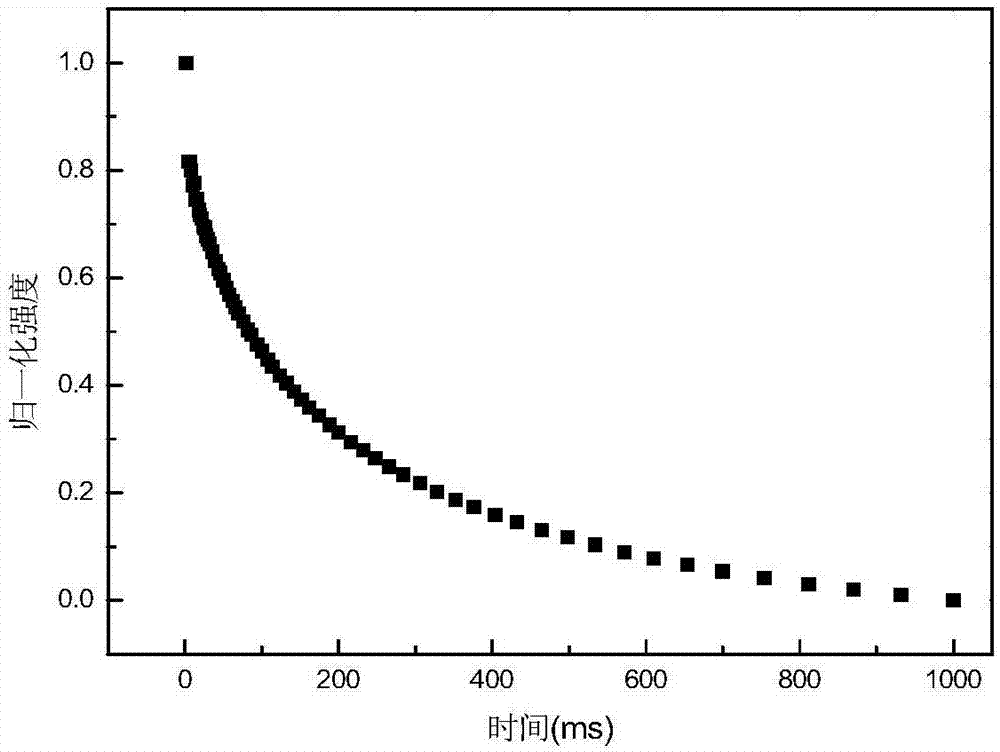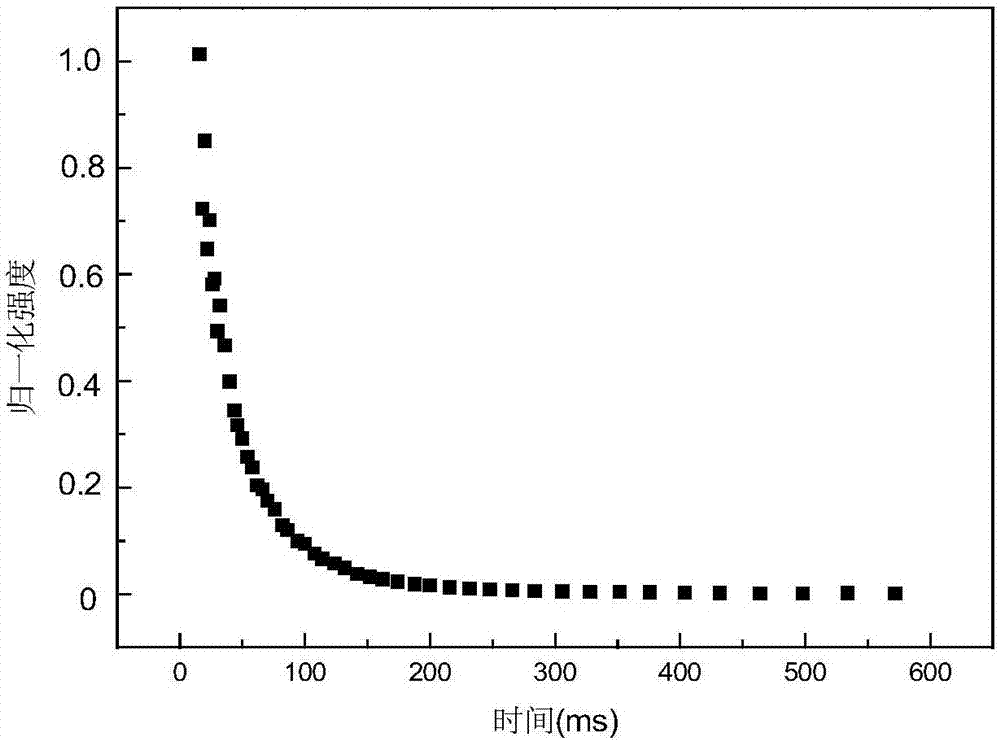Characterization method for porous structure of regenerated cellulose material
A regenerated cellulose and characterization technology, applied in the field of fiber characterization, can solve the problems of sample damage results, untrue reliability, etc.
- Summary
- Abstract
- Description
- Claims
- Application Information
AI Technical Summary
Problems solved by technology
Method used
Image
Examples
Embodiment 1
[0041] Embodiment 1, to the characterization of the pore structure of viscose fiber
[0042] First, soak the regenerated cellulose material:
[0043] (1) Take a certain amount of viscose fiber and place it in N,N-dimethylacetamide (DMAc) solution;
[0044] (2) placed in a shaker and shaken at room temperature 25°C for 7 days;
[0045] (3) After the sample was taken out, the content of DMAc in the sample was determined to be 89% by thermogravimetric analysis.
[0046] The samples were then tested by hydrogen nuclear magnetic relaxation spectroscopy.
[0047] The CPMG pulse sequence is used in the test, the test temperature is 25°C, the echo time is 1ms, and the number of sampling points is 100.
[0048] Export the NMR relaxation data as figure 1 As shown, using the inverse Laplace formula (1), the fitting is carried out on Matlab software.
[0049] The fitting results are as figure 2 shown.
[0050] figure 2 The abscissa in represents the logarithm of the relaxation t...
Embodiment 2
[0051] Embodiment 2, the characterization of the pore structure of regenerated cellulose hydrogel
[0052] First, soak the regenerated cellulose material:
[0053] (1) Get a certain amount of cotton linter pulp (cellulose, provided by Hubei Chemical Fiber Group Co., Ltd.), dissolve the cotton linter pulp in NaOH / urea aqueous solution and let it stand to form a hydrogel, soak it in H at room temperature 2 O middle;
[0054](2) placed in a shaker and shaken at room temperature for 7 days;
[0055] (3) After the sample was taken out, it was determined by thermogravimetric analysis that the H in the sample was 2 The content of O is 85%.
[0056] The samples were then tested by hydrogen nuclear magnetic relaxation spectroscopy.
[0057] The CPMG pulse sequence is used in the test, the test temperature is 25°C, the echo time is 1ms, and the number of sampling points is 56.
[0058] Export the NMR relaxation data as image 3 As shown, using the inverse Laplace formula (1), the ...
Embodiment 3
[0061] Embodiment 3, the characterization of the hole structure of polyphosphoric acid solution regenerated fiber
[0062] First, soak the regenerated cellulose material:
[0063] (1) Get a certain amount of polyphosphoric acid solution regenerated fiber, soak in DMAc at room temperature;
[0064] (2) placed in a shaker and shaken at room temperature for 7 days;
[0065] (3) After the sample was taken out, the content of DMAc in the sample was determined to be 89% by thermogravimetric analysis.
[0066] The samples were then tested by hydrogen nuclear magnetic relaxation spectroscopy.
[0067] The CPMG pulse sequence is used in the test, the test temperature is 25°C, the echo time is 1ms, and the number of sampling points is 100.
[0068] Export the NMR relaxation data as Figure 5 As shown, using the inverse Laplace formula (1), the fitting is carried out on Matlab software.
[0069] The fitting results are as Figure 6 shown.
[0070] Depend on Figure 6 It can be se...
PUM
 Login to View More
Login to View More Abstract
Description
Claims
Application Information
 Login to View More
Login to View More - R&D
- Intellectual Property
- Life Sciences
- Materials
- Tech Scout
- Unparalleled Data Quality
- Higher Quality Content
- 60% Fewer Hallucinations
Browse by: Latest US Patents, China's latest patents, Technical Efficacy Thesaurus, Application Domain, Technology Topic, Popular Technical Reports.
© 2025 PatSnap. All rights reserved.Legal|Privacy policy|Modern Slavery Act Transparency Statement|Sitemap|About US| Contact US: help@patsnap.com



